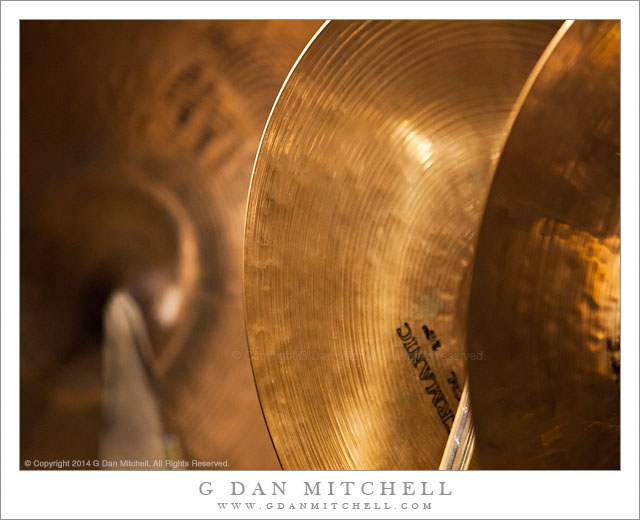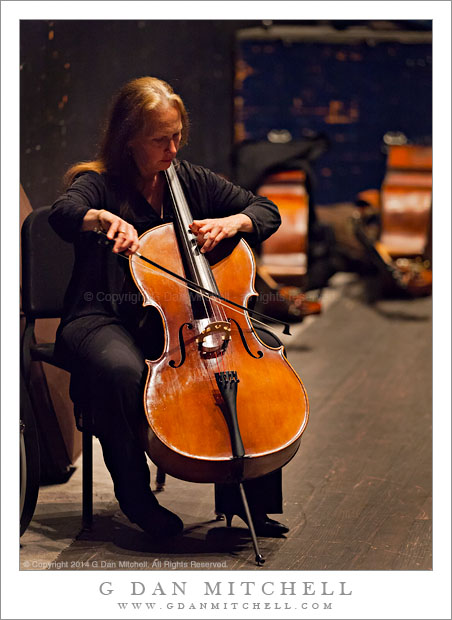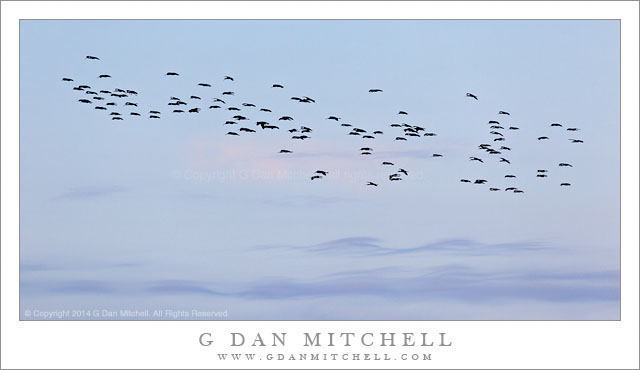
Wendell Rider, French Horn. San Jose, California. May 17, 2014. © Copyright 2014 G Dan Mitchell – all rights reserved.
Wendell Rider, French Horn, performing with Symphony Silicon Valley
Today, another photograph of musicians. Anyone seeing a theme here yet?;-) This is a recent photograph from my three-year project photographic classical musicians. I virtually always work in low light, backstage, and during rehearsals and concerts. While working to be discreet, I often photograph through gaps in the orchestra shell, between music stands and instruments, and in very dark backstage areas.
Over time I have found some ways to accomplish this often challenging photography. I use long lenses to isolate subjects against a blurred version of the often complex backgrounds of the orchestra environment. I look for juxtapositions of performers, instruments, and perhaps other on-stage objects. I almost always shoot wide open, allowing backgrounds to blur. And much of the shooting is work of opportunity—I see a momentary opportunity and then I work quickly to capture it. Here I found that I had a decent view of the French horn section through a gap in the orchestra shell wall. A long lens allowed by to isolate the main subject and a large aperture threw the background out of focus.
 G Dan Mitchell is a California photographer and visual opportunist whose subjects include the Pacific coast, redwood forests, central California oak/grasslands, the Sierra Nevada, California deserts, urban landscapes, night photography, and more.
G Dan Mitchell is a California photographer and visual opportunist whose subjects include the Pacific coast, redwood forests, central California oak/grasslands, the Sierra Nevada, California deserts, urban landscapes, night photography, and more.
Blog | About | Flickr | Twitter | Facebook | Google+ | 500px.com | LinkedIn | Email
Text, photographs, and other media are © Copyright G Dan Mitchell (or others when indicated) and are not in the public domain and may not be used on websites, blogs, or in other media without advance permission from G Dan Mitchell.



